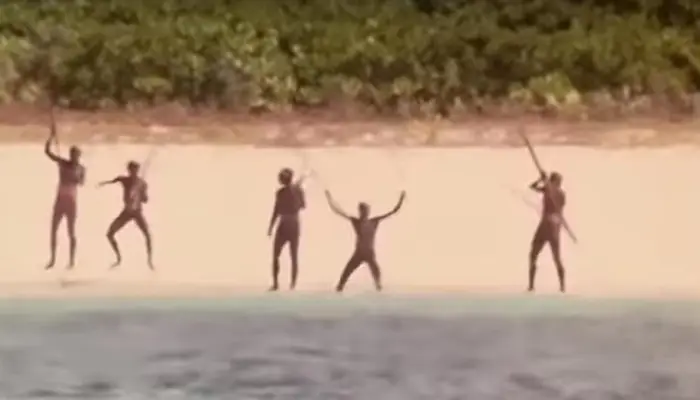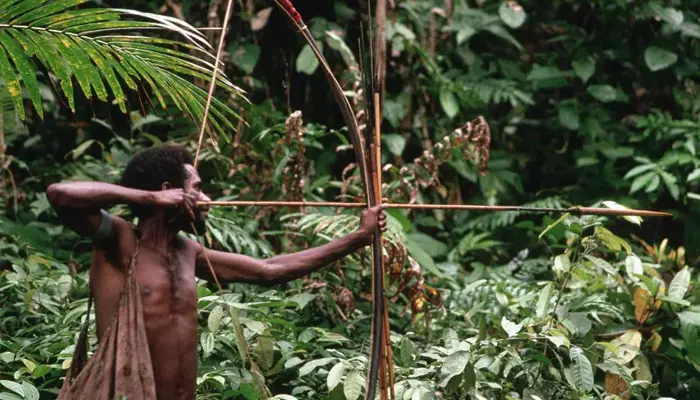New Footage Reveals World's Largest Isolated Tribe: Journey into 5 Hidden Tribes Across the Globe
- Admin
- 1 year ago
- 4 minutes read

In recent days, more than 50 tribe people have been spotted in the village of Yine
There are very few isolated tribes remaining on the face of the Earth. In recent times, rare pictures have been seen of the Mascho Piro tribe, which was contacted for the very first time in the Peruvian Amazon, coming out from an unknown territory. The Survival International let out the pictures. The tribes were seen relaxing on the river bank in Madre de Dios. It is good to know that there are still places and people leading their lives from mainstream society.
In the following paragraphs, we will learn about the Mascho Piro tribe, along with five hidden tribes around the globe.
❗️ New & extraordinary footage released today show dozens of uncontacted Mashco Piro Indigenous people in the Peruvian Amazon, just a few miles from several logging companies.
— Survival International (@Survival) July 16, 2024
Read the news: https://t.co/g9GrZlf3XB pic.twitter.com/fZv5rryzVp
Credit -- X @Survival
Mascho Piro tribe
Survival International director Caroline Pearce said, "These incredible images show that a large number of isolated Mashco Piro live alone a few kilometres from where the loggers are about to start their operations.".
Recently, more than 50 tribes have been spotted in the village of Yine, called Monte Salvadonear, on Brazil's border. Another group of 17 people was spotted by an NGO that looked after indigenous tribes. They are facing dangers as several logging companies have timber concessions in their area. Survival International reported that one company had constructed more than 200 kilometres of roads in Mashco Piro's territory to facilitate timber extraction. Canales Tahuamanu in Lima; the company has not said anything regarding this.
Rosa Padilha’s statement
The tribe has also been spotted beyond the border of Brazil by Rosa Padilha at the Brazilian Catholic bishops' Indigenous Missionary Council in the state of Acre. "They flee from loggers on the Peruvian side," she said. "At this time of the year, they appear on the beaches to take tracajá (Amazon turtle) eggs. That's when we find their footprints on the sand. They leave behind many turtle shells."They are a people with no peace, restless because they are always on the run," she said.

Sentinelese tribe
The Sentinelese reside on North Sentinel Island in the Andaman and Nicobar Islands. They are among the world's most isolated communities. Their population is estimated to be between 50 and 200 individuals. They had sustained themselves through hunting, gathering, and fishing with canoes. Despite being related to nearby Andamanese tribes, their native language remains largely unknown. The Sentinelese hit world headlines in 2018 when an American missionary sneaked into their island territory and was killed—an example of their hostile behaviour towards outsiders and an example of the last among the world's uncontacted tribes.
Awa tribe
They are believed to be one of the most endangered tribes on Earth. About 600 of them, of whom at least 100 are still leading a nomadic life in the Amazon rainforest of the Brazil-Peru border, are under the real threat of forestry fires and illegal logging. In return, the Guajajara became 'Forest Guardians,' working to protect the Awá and highlighting critical efforts within Indigenous communities to safeguard land and culture in the face of environmental and other external threats.
Kawahiva tribe
Also, the tribe that neighbouring settlers, other tribes, and the media have called the'short people' or the'redhead people' is believed to have adapted to the nomadic life during the last few decades as the activities of deforestation extended into that Brazilian Amazon rainforest. When they have rarely made contact, they have been peaceful, and that is all that can be known of them. The Kawahiva live through hunting, gathering, and the ingenious way they climb up vertical logs to gather honey from trees.

Credit -- The Telegraph
Yaifo tribe
There are around 40 uncontacted tribes in Papua New Guinea, mostly leading hunter-gatherer lives with little or no contact with the outside world. The Yaifo tribe avoids outsiders; however, one British explorer did manage to make contact and get back out. The Korowai tribe was unknown to Western anthropologists until the 1970s.












